India
Madhya Pradesh requests shift of coal linkage to Korba
Madhya Pradesh requests shift of coal linkage to Korba
The Madhya Pradesh Power requested for rationalization of the coal linkage to the plant by shifting higher grade coal of the Korea-Rewa mines in the state to the Korba field mines in Chhattisgarh, which has lower (`F`) grade coal.
US, India exhibit progress in energy cooperation
The governments of US and India have instituted a number of innovative programs for advancing of the cooperation in clean and renewable energy and energy efficiency,” reports U.S. Secretary of State Hillary Clinton.
NHPC's Uri-II hydro project on track for December commissioning
NHPC has completed dam excavation and concreting for its 240 MW Uri-II hydroelectric project in June with all four unit on track for commissioning by December 2011.
Nimoo Bazgo HEP project slowed down by BHEL's poor performance
The Nimoo Bazgo hydroelectric project is progressing slowly due to delay in supply of electro-mechanical parts by BHEL. BHEL is said to be slacking in its efforts to mobilize the resources to meet the project requirement and provide adequate manpower for the 45MW project. Regular meetings held with representatives of BHEL to discuss the criticalities proved to be unfruitful.
Gamesa Wind Turbine enters Gujarat market
Gamesa Wind Turbine has announced its foray into Gujarat.
US firm to invest $820M in Indian renewable energy
Overseas Private Investment Corp plans to invest up to US $820 million or about Rs 3,600 crore in the Indian renewable energy sector within 2011.
India may soon export nuclear reactors: US report
A United States Congressional report said that India could soon join a select group of countries in exporting nuclear reactors.
Azure Power gets $16 M financing for Rajasthan solar project
Azure Power closed a $ 16 million long term financing tie-up with Exim Bank for the 5MW solar power project being set up in Rajasthan, reports the Economic Times.
Abound Solar secures $9.2M loan for Rajasthan project
The US Export-Import Bank is providing a $9.2 million loan to support exports of Abound Solar's CdTe thin-film PV modules to Punj Lloyd Solar Power for a 5MW power plant in Rahjasthan.
Nipko all set to build Tipaimukh Dam
Tipaimukh Dam's construction is about to begin, said a top official of Nipko, which will implement the hydroelectric project in River Barak, an international river.
Maithon RBC TPP Unit-II line completion critical
As per the latest report of the Ministry of Power (MoP) on associated transmission system (ATS) availability for projects targeted during FY12, Unit-II of 525 MW Maithon RBC thermal power plant (TPP) is soon to be commissioned while the associated 400 kV D/C MRB-Ranchi transmission line is still not complete. It is expected that delay in transmission line completion will not affect the commissioning since there is capacity in the already available link. Further, stringing of 304 circuit kilometers (ckm) of a total 376 ckm has been completed and 506 out of 534 towers have been erected. The pile work for the transmission line needs to be completed at the earliest too. Balance one railway as well as forest clearance need to be expedited and forest rights act (FRA) issue needs to be resolved. Also, balance stringing needs to be completed at an accelerated pace. Bay work at Ranchi is under progress as well and the reactor has been received though works need to be hastened. The 525 MW Maithon RBC TPP Unit-II, located in West Bengal, is a project of Maithon Power Limited (MPL). MPL is a joint venture of Damodar Valley Corporation (DVC) and Tata Power. Executing agency for ATS of the TPP is PowerGrid Corporation India Limited (PGCIL).
Tiroda Unit-I: Adani pursuing ATS; critical for September 2011
As per the latest report of the Ministry of Power (MoP), the associated transmission system for the 660 MW thermal power plant (TPP) phase-ll unit-I located in Tiroda, Maharashtra is critical for September 2011. It is being pursued by Adani Power Maharashtra Limited (APML), the developer of the TPP. Stringing of 294 circuit kilometers (ckm) out of a total of 438 ckm is complete for the 400 kV D/C Tiroda-Warora transmission line and 532 out of 587 towers have been erected. APL is pursuing the forest clearance at the local level though stringing needs to be expedited. Further, the 400 kV D/C (Q) Warora-Wardha line is also under progress. Of a total length of 146 ckm, stringing of 114 ckm is complete and 187 towers have been erected. Work is in progress for Warora substation but it is likely to be delayed and the pace needs to be accelerated. Completion of the 2 bays at Wardha (PG) substation is critical for power evacuation and works must be expedited. he excavation had begun in May 2011, thus works are to be expedited Unit-I of 3 X 660 MW Tiroda TPP is being commissioned by APML. Executing agency of the ATS is Maharashtra Eastern Grid Power Transmission Company Limited (MEGPTCL), a joint venture between APML and Maharashtra State Electricity Transmission Corporation Limited (MSETCL).
NPCIL seeks loans for 2 atomic plant projects
Nuclear Power Corporation of India is pursuing a Rs 12,000 crore loan from the Power Finance Corporation to set up two atomic plants in Gujarat and Rajasthan with a total capacity of 2,800 MW.
Bangladesh gets Indian assistance on power projects
Work is underway to build transmission connectivity to enable Bangladesh to import 500MW of electricity from India.
Reliance Power and Power Finance to Sell Carbon Credits from India Power Projects
Reliance Power will partner with state-owned Power Finance Corp in its quest to earn INR3.1bn ($693m) by selling carbon credits generated by two ultra-mega power projects in India. The public private partnershipwill allow the company to earn the 3.5 million carbon credits worth INR1.1bn (246.13m) over a ten-year period from its 4GW coal-fired Krishnapatnam power project located in Andhra Pradesh. Meanwhile, the Sasan project, located in Madhya Pradesh, is expected to generate over 22 million carbon credits worth INR2bn ($447.51m). The two developments are being built at an estimated cost of INR330bn ($7.38bn).
Tata BP commissions 1MW solar plant in India
Tata BP Solar India has installed and commissioned a 1MW solar plant in Tamil Nadu, India.
Korean power equipment firm to manufacture in India
South Korean company Doosan will build a manufacturing plant in Tamil Nadu, India to produce boilers for Indian thermal power projects.
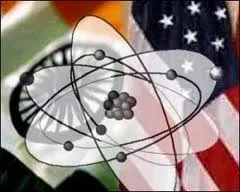

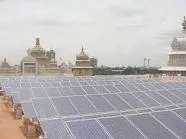
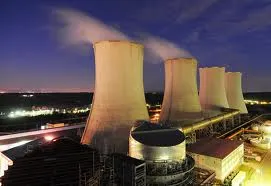

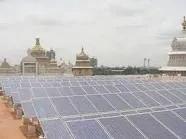

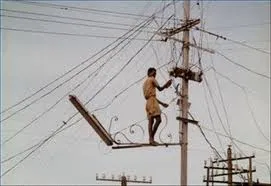
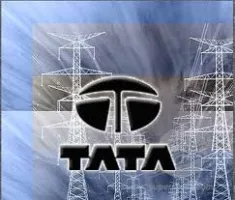

 Advertise
Advertise














